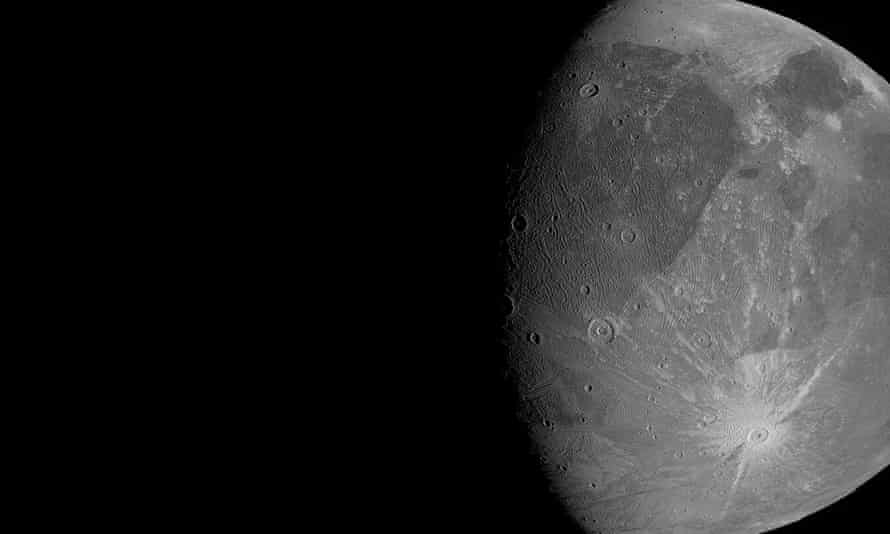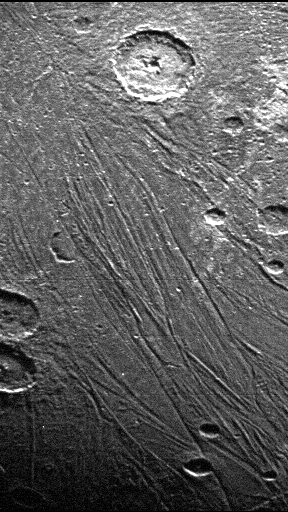Jupiter's largest moon revealed in stunning detail in first close-up images in 20 years
These are the first close-ups of Ganymede in over 20 years.

Swooping low over Jupiter's largest moon, Ganymede, NASA's Juno probe has snapped the first close-up photographs of the frozen giant in more than two decades — and they're breathtaking.
Juno zoomed as close as 645 miles (1,038 kilometers) from the icy surface of the solar system's largest moon Monday (June 7), giving the spacecraft just a 25-minute window to snap photos — long enough for five exposures —— before it zipped away on its 33rd orbit of Jupiter.
Two photos from the flyby released by NASA Tuesday (June 8) — one of Ganymede's light, sun-facing side and the other of its dark side — show an icy, inhospitable surface pockmarked with craters from asteroid impacts, as well as long, narrow striations possibly caused by tectonic fault lines.
Related: Jupiter's Great Red Spot: Photos of the solar system's biggest storm
"This is the closest any spacecraft has come to this mammoth moon in a generation," Juno principal investigator Scott Bolton, a physicist at the Southwest Research Institute in San Antonio, said in a statement. "We are going to take our time before we draw any scientific conclusions, but until then we can simply marvel at this celestial wonder."

NASA's Galileo spacecraft captured the last photos of the ginormous moon, which is the ninth-largest object in the solar system, more than 20 years ago. Prior to this, the only other detailed close-ups came from the Voyager missions in the late 1970s.
First discovered by Galileo Galilei in 1610, Ganymede is one of the gas giant Jupiter's 79 moons. At 3,270 miles (5,260 km) wide, Ganymede is larger than the planet Mercury and the only moon in our solar system with its own magnetic field.
Sign up for the Live Science daily newsletter now
Get the world’s most fascinating discoveries delivered straight to your inbox.
The Juno science team will now scour the new images for vital clues about the composition, ionosphere (the upper part of an atmosphere where atoms are ionised by solar radiation), magnetic field, radiation environment and ice shell of the Jovian moon, as well as investigate whether any areas of the moon have been altered since our last clear look. The level of detail offered by Juno's camera has enabled the team to take photos with a resolution of about 0.6 to 1.2 miles (1 to 2 km).
Launched just under a decade ago in August 2011, Juno has been orbiting Jupiter for five years, and the spacecraft is just a month away from the end of its primary mission. NASA plans to keep the probe surveying the stormy surface of Jupiter until 2025, with passes over two of the gas giant's other large moons, Europa and Io, lined up for 2023.
Originally published on Live Science.

Ben Turner is a U.K. based staff writer at Live Science. He covers physics and astronomy, among other topics like tech and climate change. He graduated from University College London with a degree in particle physics before training as a journalist. When he's not writing, Ben enjoys reading literature, playing the guitar and embarrassing himself with chess.









